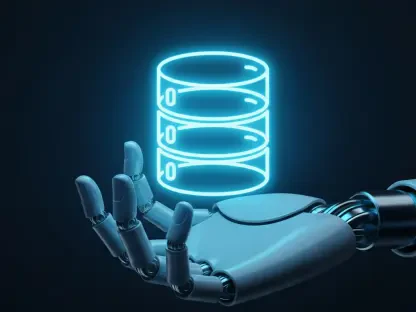Anand Naidu is a well-versed development expert with deep insights into both frontend and backend technologies, making him uniquely qualified to discuss innovative solutions in software testing. In this interview, we dive into the launch of BrowserStack’s AI suite, designed to streamline software testing workflows across the development lifecycle with a suite of AI-driven agents.
What motivated BrowserStack to launch an AI suite specifically for automating software testing workflows?
BrowserStack recognized that as software complexity grows, traditional testing methods can become a bottleneck, slowing down innovation. Our motivation was to create a suite that empowers developers to automate repetitive tasks, reduce errors, and enhance test coverage efficiently, ultimately accelerating the entire software development lifecycle.
How did you identify the bottlenecks in the software testing lifecycle that your AI suite aims to address?
We began by mapping out the typical testing journey to see where teams struggle most. The analysis showed that a lot of time is spent on manually creating and maintaining test cases. These activities not only consume precious hours but also introduce human error. Addressing these specific pain points with AI allowed us to significantly boost efficiency.
Could you elaborate on the common issues engineering teams face with traditional software testing methods?
One of the main issues is the brittleness of automated tests; they often fail with even minor UI changes, requiring tedious updates. Moreover, test case creation is labor-intensive and prone to human oversight. Teams struggle to keep pace with development cycles, which highlights the need for smarter, AI-driven testing solutions.
Can you provide insights into how BrowserStack AI agents differ from generic copilots or plugins?
Unlike generic solutions, our AI agents are embedded directly into BrowserStack products, offering seamless integration and leveraging context-aware insights from a unified data source. This makes them uniquely capable of optimizing every stage of the testing process, ensuring consistently robust test scenarios.
What specific advantages do these AI agents offer over general-purpose large language models?
The primary advantage is that our AI agents are purpose-built with a deep understanding of the testing workflow. They don’t just generate tests but also adapt and heal them proactively, accommodating changes in real-time and reducing manual intervention significantly more effectively than generic models.
Could you walk us through the functionalities of the five new AI agents launched?
Certainly. The Test Case Generator Agent rapidly creates thorough, context-aware test cases. The Low-Code Authoring Agent transforms these into reliable automated tests without complexity. The Self-Healing Agent smartly updates tests with UI changes to avoid failures. Meanwhile, the A11y Issue Detection Agent identifies accessibility issues to help build inclusive software. Lastly, the Visual Review Agent filters out minor visual changes, highlighting only significant visual updates that warrant attention.
How does the Test Case Generator Agent streamline test creation?
This agent analyzes product documentation to auto-generate test cases that are context-aware and comprehensive, reducing the creation time by over 90%. It ensures that edge scenarios and business logic validations are included, enhancing the scope and accuracy of testing.
What role does the Low-Code Authoring Agent play in simplifying automated tests?
By converting detailed test cases into low-code automated tests, this agent enables faster implementation of test scenarios. It reduces the technical barrier for teams, allowing even those with limited coding proficiency to create robust automated tests efficiently.
How does the Self-Healing Agent adapt to user interface changes?
This agent minimizes false positives by identifying and addressing UI changes in tests dynamically. It autonomously updates references to altered UI elements, ensuring that tests continue to run successfully without manual changes, thereby reducing maintenance overhead.
In what ways does the A11y Issue Detection Agent contribute to accessibility in software products?
It plays a pivotal role by automatically detecting accessibility gaps, guiding teams to address issues such as improper alt text or navigation problems. This ensures software is accessible to a broader audience while simultaneously providing actionable insights for improvement.
How does the Visual Review Agent differentiate between meaningful visual updates and minor shifts?
The agent cleverly filters out pixel-level alterations, focusing only on substantial changes using bounding boxes to highlight significant variances. This prevents unnecessary regression work, allowing developers to concentrate on truly impactful visual updates.
What are BrowserStack’s plans for the development of additional AI agents?
We’re already in the pipeline, developing more than 20 additional agents. Our goal is to continually expand the suite’s capabilities, addressing evolving challenges and enhancing different facets of the testing lifecycle to provide a more comprehensive, automated testing environment.
How do you ensure seamless integration of these agents with existing BrowserStack products?
Each agent is designed to work harmoniously with existing BrowserStack solutions. They require no additional setup, integrating smoothly into current workflows. This ensures that teams can leverage new capabilities without disrupting their established processes.
What are the potential areas of improvement that future agents might tackle?
Future agents will likely focus on emerging challenges like optimizing performance testing, enriching test data generation, and providing enhanced support for newer technologies and frameworks. Continual evolution in features will ensure our tools remain relevant and ahead of industry demands.
Can you discuss the purpose and functionalities of the BrowserStack MCP Server?
The BrowserStack MCP Server serves as an integration hub, allowing seamless testing directly from development environments. It means developers can interact naturally with testing tools within their everyday workflows, enhancing productivity and efficiency by reducing switching costs.
How does the MCP Server facilitate testing directly from integrated development environments?
By natively supporting direct interactions from IDEs, MCP Server lets developers initiate tests without leaving their familiar coding environment. This integration ensures a smooth workflow, less context switching, and faster turnaround times for testing and feedback.
In what ways does it enhance collaboration with tools like GitHub Copilot, Cursor, and Claude?
It provides an interface for these tools to tap directly into BrowserStack’s testing capabilities, making it simple to conduct and manage tests within popular developer aides. This synergy improves collaboration by allowing seamless sharing and execution of tests.
How does BrowserStack AI align with the company’s overall mission and vision?
Our overarching vision revolves around simplifying developer workflows and enabling the seamless release of high-quality software. BrowserStack AI embodies this vision by proactively addressing the testing lifecycle, reducing obstacles, and paving the way for faster, more reliable releases.
What impact do you foresee AI having on the software testing industry in the coming years?
AI is set to revolutionize software testing by automating increasingly complex scenarios, minimizing human intervention, and enhancing the accuracy and speed of test execution. As AI continues to evolve, we’ll see testing become more efficient, consistent, and integrated with development processes.
Do you have any advice for our readers?
Stay curious and open to adopting new technologies like AI in your workflows. The shift might initially seem daunting, but the benefits in efficiency and accuracy are transformative. Embrace these innovations to not only streamline tasks but also to focus more on creative, high-value work.









